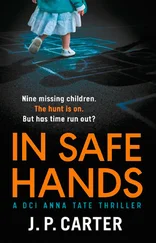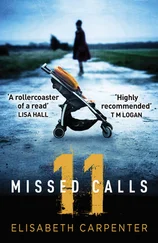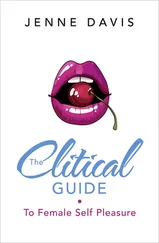Maybe Kandy Kat survived like that, from images of eating and images of food. Light consuming light, the desire for sustenance a type of sustenance in itself. Even if he was always paused on the narrow edge of starvation, what he was doing in pursuit of Kandy Kakes sustained him. They made his life terrible, but at the same time they made him more himself.
I WAS SITTING ON THEfloor of Wally’s, in what they called Wally’s Food Foyer, a grand and open and frosty-cool space decorated with gold-framed photographs of food lit lovingly by a large chandelier decorated with bananas and pudding cups and racks of ribs, which hung from the ceiling in the middle of the hall. On this structure, examples of the sale items of the day dangled just out of their customers’ reach. I stood up and readjusted my dress. The ribs suspended in the air over me turned slowly. Artificial light glinted off the corners of the plastic casing, making the meat look shiny and hard. The ribs were like a toy model of ribs that children could play with and pretend to eat.
This DoubleWally’s was the largest grocery store within a thirty-mile radius, larger than the one by our house. Its scale was a matter of repetition. There was an aisle that was only for ketchups and mustards. It stretched red on one side and yellow on the other, two or three brands carving up the wall and reiterating their particular shape of plastic squeeze bottle for many feet. The sprawl of the aisle was a single tessellated surface dented where a few bottles had been removed, revealing a multiplicity of identical bottles behind them. I stood there in the ketchup aisle trying to remember how this place was laid out.
Every Wally’s had a similar feel inside, the interminable rows of smooth color that began to break apart as you got closer to them, dissolving into little squares of identical logos. But the stores had a special trick to them, an organizing concept based on years of statistical data about purchasing preferences, the drift habits of purposeless customers: they were designed to baffle. The most sought-after items — candy bars, sandwich meat, milk — were placed in the most inaccessible parts of the store, not next to one another, but in separate and distant locations that were rotated every one, two, or three weeks in accordance with an obscure schedule developed by top management. Because the things you wanted most were constantly on the move, you couldn’t trust muscle memory to guide you back to them. You moved slowly and cautiously, looking for signs of familiarity in your product surroundings. You followed false links and backtracked and still usually ended up in two or three wrong places before finding the right one. Sometimes you ended up at a different desirable object, peanut butter, for example, and bought it instead, but more often you bought both, and the things in between, following a chain of substitutions and transformed desires until your basket was full. Wally’s customers ultimately spent thirty-six percent more time wandering the aisles than customers of the leading supermarket competitor, which equated to an impressive twenty-two percent increase in unforeseen purchases along the way. You could recognize Wally’s customers by the confused, placid look on their faces as they came to a full stop in the middle of the aisle, gazing wistfully at nothing in particular.
Kandy Kakes used to be in the back right corner of the store, then they were in the far left near the sugar cereals, but that was weeks ago. By now they’d be in the place that Wally Incorporated’s team of programmers, statisticians, and behavioral psychologists had calculated to be the least thinkable location for the statistically average Kandy Kakes consumer. I closed my eyes and tried to think of the place I’d be least likely to think about. I made an empty space in my mind and tried to keep out of it. I let my hands flop open as if I were asleep or had been knocked unconscious. All I could hear inside was the hum of Muzak all around me, familiar sounds with all the words missing.
I opened my eyes to no new clues, no new insights. To my far left, a Wally squatted close to the ground, working at shelving some cartons of raisins. I gave him a long stare to let him know that if he was spying on me, I was spying on him right back. Then I saw that what this Wally was doing was not so much shelving as rearranging, moving the front-most boxes of raisins to the back and vice versa. Most likely B had guessed right: they were trailing me just to keep tabs, make sure I wasn’t going to steal anything. But that gave me an idea. The work that the Wallys seemed to be doing was purposeless, designed only to distract me and obstruct. If everything about Wally’s was designed to thwart me, I would operate as though I had no goal. Against my better instincts, I turned randomly into the maze of aisles and began wandering. It was possible that I would come around to the thing that I wanted most.
The direction I had chosen carried me toward gift items, flowers, and other inedibles. It seemed like an entirely separate store swallowed up and surviving within the belly of a larger beast. I stopped to look at the rack of frill-topped flowers: white, pink, red, and then, more disturbingly, green, blue, neon orange. They clustered to one another like a single growth, blossom crowding blossom so that they looked hard and burstable. I squeezed their puffy heads between my fingers to check if they felt real. The frill of petal looked like the thin red membrane hidden inside the gills of a fish. I would have ripped one apart to see if color went all the way through the bloom, but I heard a voice from behind me, a male voice, so near to me that I immediately thought it had to be C sneaking up on me again, sliding his warm hand up the nape of my neck.
“They’re died,” said the voice.
This seemed like a strange way to say something obvious. I turned around and looked for the source, which sounded familiar and new at the same time.
The speaker was about the same size as C, wide in the shoulders, hair more dark than light. I could tell that he wasn’t C, but when I looked at him I felt the tug of recognition. That feeling alone made him and C blur together in my mind.
“They’re dyed,” he said again. “It’s easy to do, you just need some warm water and food coloring. You put twenty or thirty drops in a glass of water and stir it up, then you chop the bottoms off in a slant. You put the carnations stem down in the water and they drink all the color up. They do it automatically. It’s easy.”
I asked: “Does it hurt?”
He looked confused.
I stared at the flowers. I worried about them, their deaths serving as decoration for birthdays and dinners. I looked at his face, then back at the dying flowers. Then I remembered, all at once, how I knew him. He had light brown hair cut short so that you could see his scalp beneath the little hairs. He had thin skin, smooth as paper, that looked like it would feel clean and easy to touch. He was less handsome than the drawing of him had been and more handsome than he had looked from the car, as we watched him move around inside his condo.
A week after B moved in, she asked me to go on a drive with her. It was the first thing she had asked me since she had shown up, brittle and small boned, hauling her gigantic suitcase up a staircase with three cramped turns in it. B was absentmindedly picking at the upholstery on the armchair where she was sitting, destroying an embroidered peony and staring at me as if she were trying to see all the way through the me of this moment to what the me of the future would say in response.
B drove an old maroon sports car that must once have been a nice object. I tucked my knees up inside the passenger’s-side cabin, where the floor was covered with scraps of paper, torn-out advertisements, photos of faces, and food mingling together, tamped down by the bottoms of shoes. Every time I moved I heard the sound of something squealing in protest, the leather seat or the Styrofoam cups wedged underneath. I couldn’t find a way to sit where I wouldn’t be treading on a picture of something special and saved. B got in next to me and turned the key in the ignition. Hot, itchy air started pouring from the vents, smelling like vintage clothes. She put the radio on and turned it down so low you couldn’t hear anything, only feel it twitching in the air, a slightly human presence. At home she had always seemed hesitant to touch things, use things: even buttering a piece of toast was a gesture that required careful planning, several pauses, and two hands clutching the knife — so it wouldn’t slip, she said. She was the same way in her car, hesitating over the temperature of the air-conditioning, adjusting and readjusting the mirrors, talking aloud through the possible obstacles she might encounter on the way to her destination. But that night B pulled out of the driveway before I could even put my seat belt on.
Читать дальше
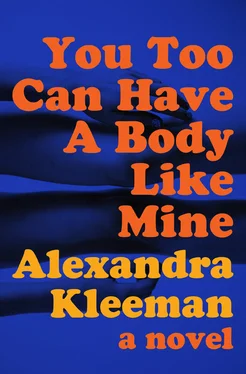

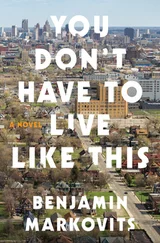
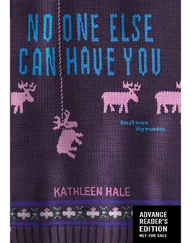
![Ally Carter - [Gallagher Girls 01] I'd Tell You I Love You But Then I'd Have to Kill You](/books/262179/ally-carter-gallagher-girls-01-i-d-tell-you-i-lo-thumb.webp)


